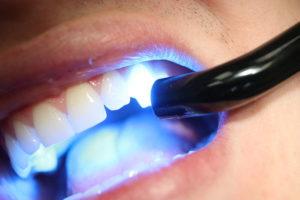 You often hear dentists who use mercury amalgam insist that fillings made with the stuff last longer than fillings made with tooth-colored composite.
You often hear dentists who use mercury amalgam insist that fillings made with the stuff last longer than fillings made with tooth-colored composite.
Of course, if that were true, it would be all the more reason to avoid them! Think of all the extra years of inhaling the vapors constantly released from one of the most neurotoxic elements known to humankind.
Fortunately, though, that conventional wisdom isn’t exactly the truth, especially when you’re talking about modern composites. Placed properly, these restorations can last just as long as the standard metal fillings and with none of the risks of heavy metal toxicity or oral galvanism.
And now a new discovery suggests how they might be made even stronger.
According to research published earlier this year in the Journal of Organic Chemistry, an extract from the bark of Chinese red pine roots has the ability to strengthen dentin and improve the bond between composite resins and the prepared tooth.
As the New Zealand Herald reported not too long ago,
Dr Guido Pauli, of the University of Illinois at Chicago, said compounds in the pine tree extract work by strengthening dentine – the tissue layer beneath the enamel in teeth.
He said: “The weak link in the chain of bonding is the interface between the resin and the dentine.
“We have clear evidence that our intervention materials change this interface much to the better.”
Tests show the tree extracts can increase the strength of dentine by up to ten times.
Dr Pauli said it would be reasonable to expect the lifespan of fillings to increase to more than a decade.
The active agents in this process? Flavonoids known as proanthocyanidins, which are found in many kinds of plants. We’ve known for a while that these can improve bond strength. But using them to strengthen the dentin itself? In the words of pharmacology professor emeritus Daneel Ferreira, this is “a totally unexpected and novel application. It is really an important breakthrough.”
And, of course, what’s nice about it is that it’s not some synthetic chemical cooked up in a lab that does this but a simple plant extract (though you can be sure some enterprising individuals will try to make a cheaper, synthetic version they can package and brand and sell to dentists).
While we have much to be grateful for with respect to modern technology, studies like this are a good reminder that nature still has gifts and wonders for us – and that technology and traditional medicine are not so opposed as some people might think.
This is part of the reason why some biological dentists also choose the word “integrative” to describe their practice. Instead of favoring one approach over another, we opt for the best that both modern science and traditional healing wisdom have to offer.
Update! No sooner had we posted this, we stumbled across news of similar research, this involving a grape seed extract. You can read about that study here.
Image by Politikaner, via Wikimedia Commons